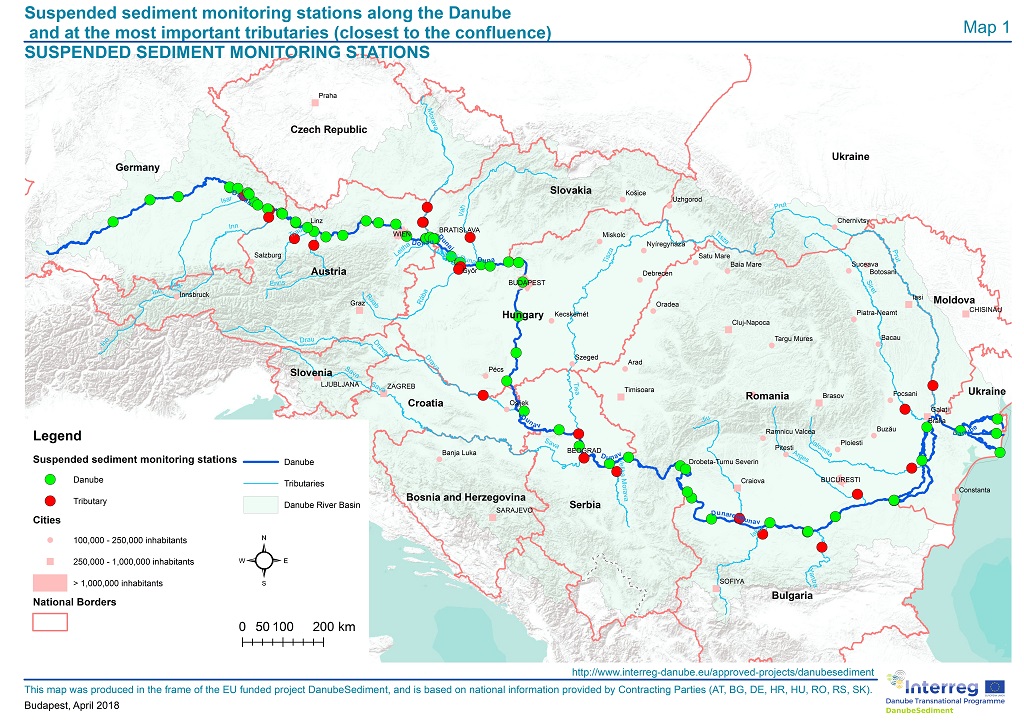DanubeSediment - Completing the Data Puzzle: Challenges and Chances
20-12-2018
Regular project meetings to discuss data gaps and key challenges
In the past three months, the DanubeSediment team had three intense meetings in Bucharest, Vienna and Zagreb. At each meeting, the work package leaders presented their latest results and discussed important issues. Key topics were:
- The project partners completed the collection of sediment data. Two reports on sediment monitoring and sediment data analysis will be published shortly. For example, these reports will include maps of sediment monitoring stations and methods along the entire Danube (see photo below).
- In respect to the sediment balance, our project partners succeeded in filling most data gaps. However, some inconsistencies still exist in stretches between neighbouring countries that used different sediment monitoring methods. This can lead to major jumps in the graph of annual suspended sediment yield along the entire Danube. At the moment, the responsible project partners are still clarifying the issues in question.
- The project report describing the drivers and pressures on sediment quantity is waiting for last changes in the GIS maps. In the past months, project partners have been gathering information about their national guidelines for the hydromorphological and biological assessment of water bodies. Goal is to develop a common methodology for risk analysis, which will be applied in case studies along the Danube.

Draft map of suspended sediment monitoring stations along the Danube (Source: BME, unpublished).
Stakeholder involvement increases capitalisation
Promoting our project results and developing synergies with other projects are important measures on the path to capitalise the DanubeSediment results. The University of Natural Resources and Life Sciences, Vienna (BOKU) has been very active and met with DanubeSTREAM in order to discuss a common approach to harmonising our project recommendations for best practice measures and avoiding discrepancies in the project manuals.
BOKU also highlighted the importance of sediments as a significant water management issue at Danube Awareness Day in Austria and at the meeting of the ICPDR River Basin Management expert group. The closer we get to finalising our results, the stronger we want to involve stakeholders and target groups in developing and supporting our recommendations for improving the sediment transport of the Danube.
